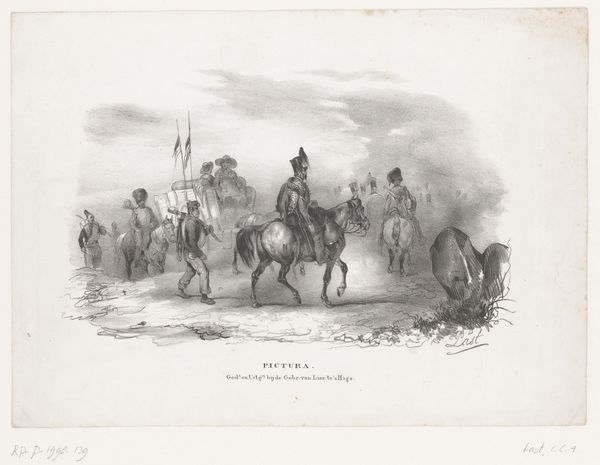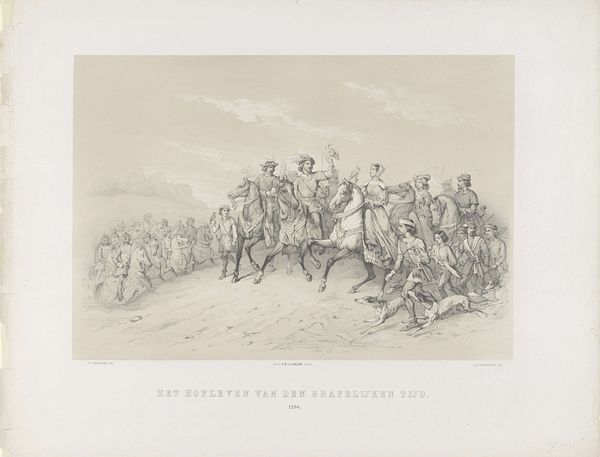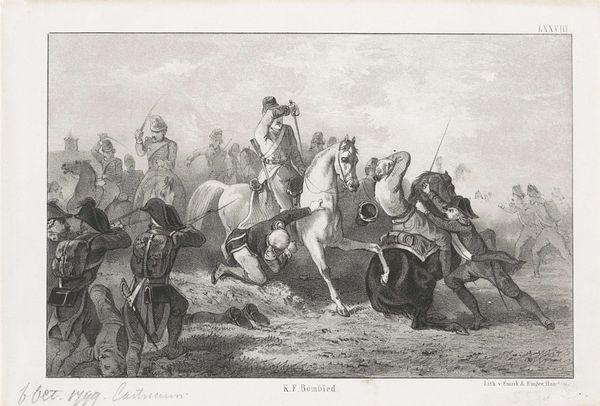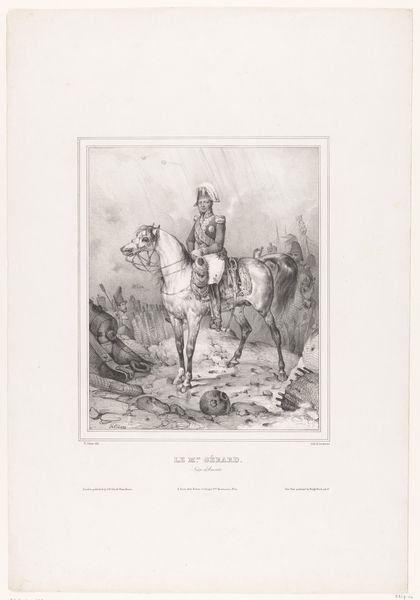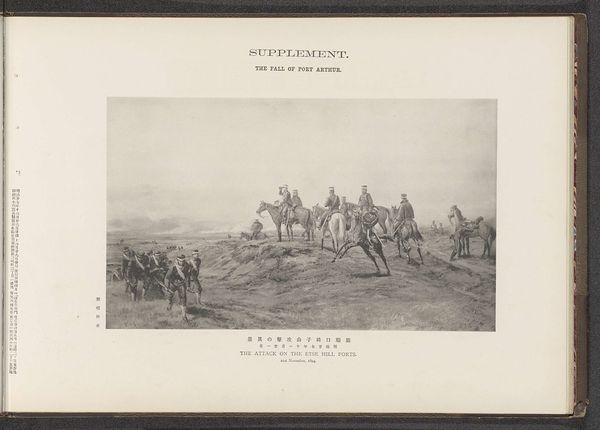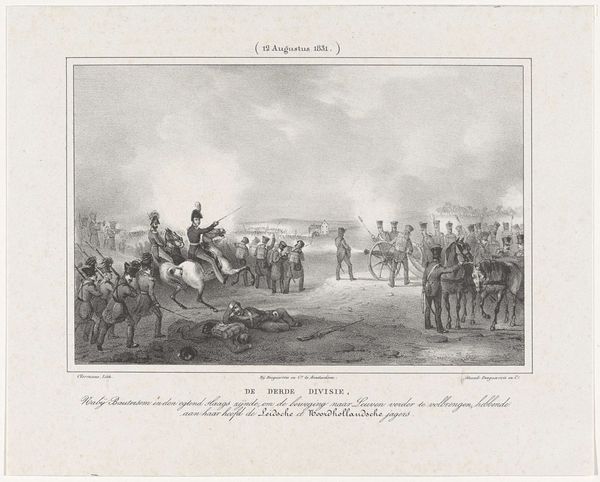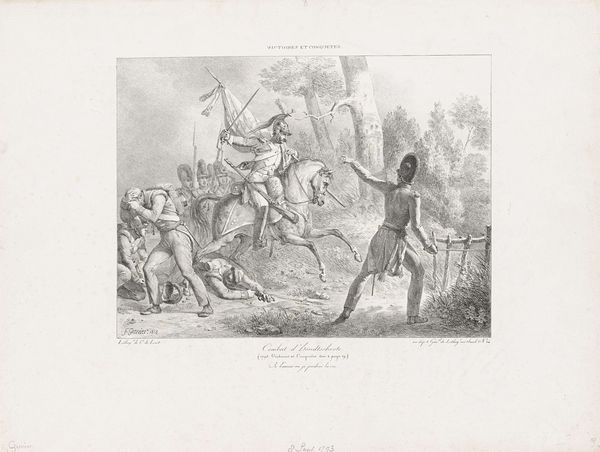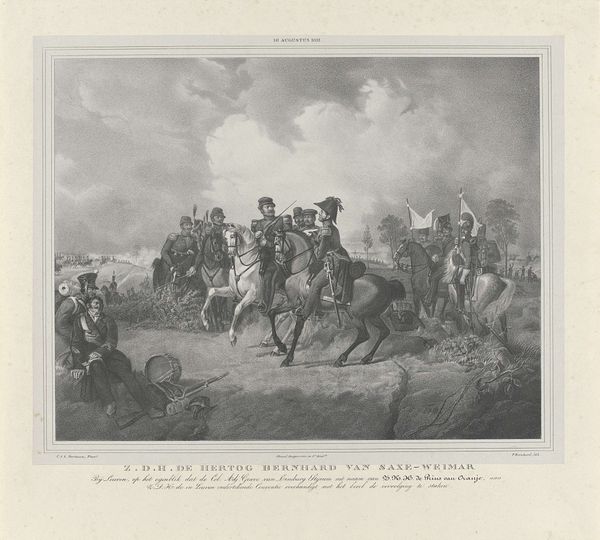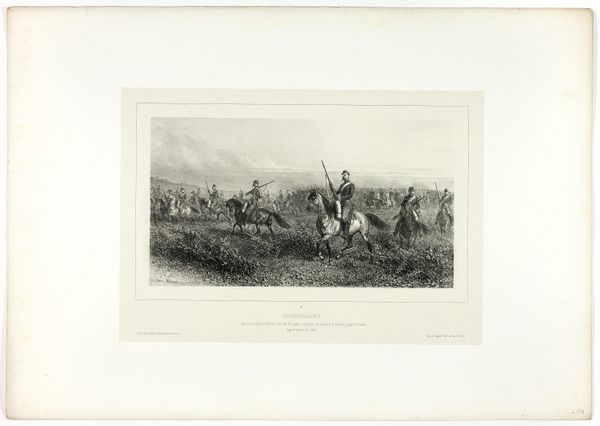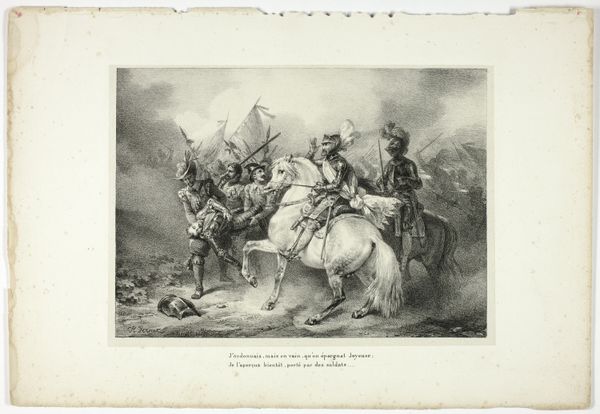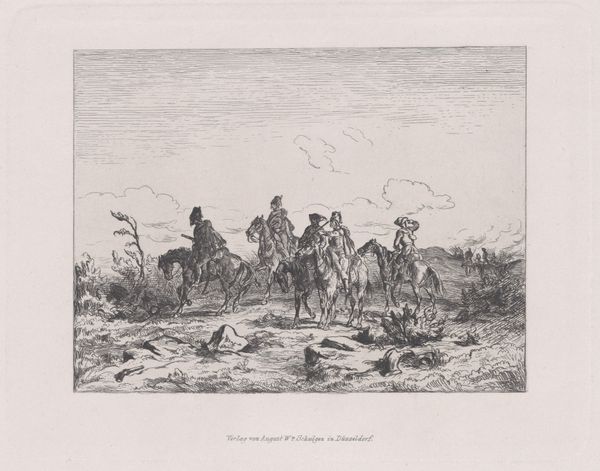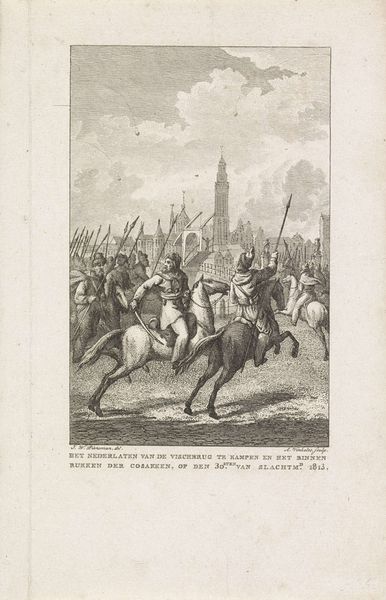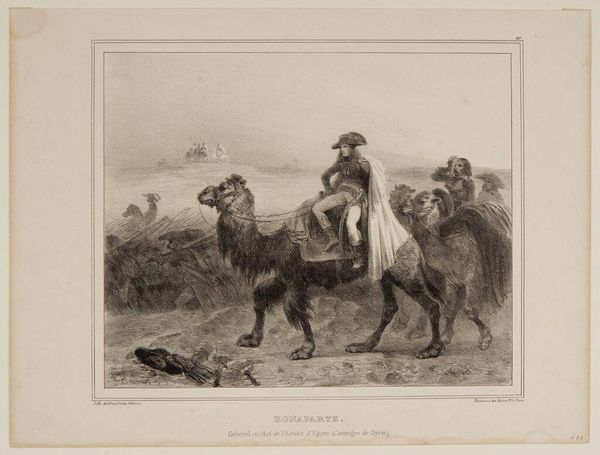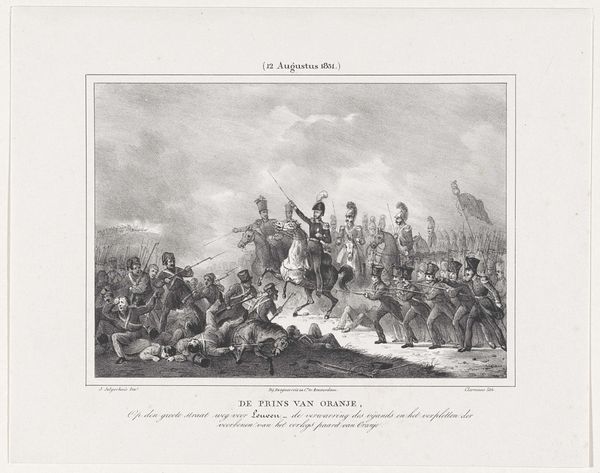
print, engraving
#
narrative-art
# print
#
romanticism
#
cityscape
#
genre-painting
#
history-painting
#
engraving
Dimensions: height 217 mm, width 286 mm
Copyright: Rijks Museum: Open Domain
Curator: Allow me to introduce "Paard van de prins van Oranje raakt gewond bij Boutersem, 1831," or "The Prince of Orange's Horse is Wounded near Boutersem, 1831." This print, an engraving crafted by J.B. Clermans in 1831, depicts an incident during a turbulent time. Editor: My immediate reaction is to the composition. It's a rather stark image in black and white, the figures positioned almost theatrically. It appears to showcase a significant event but lacks dynamic movement, feeling somewhat static, doesn't it? Curator: The composition certainly guides the viewer. Clermans utilizes the principles of Romanticism to underscore drama. Note the use of line, the stark contrast of light and shadow, creating distinct shapes that define depth. The rigid formations versus the disarray in the foreground. What structural observations do you find interesting? Editor: Looking at it from a production angle, I’m struck by the meticulous process of engraving. Think about the labor involved to achieve this level of detail, translating this scene into a series of carefully incised lines. The artist meticulously cuts into the plate, building up the image layer by layer—each strike with the burin representing human exertion, human will. Curator: Yes, that dedication to process adds layers of understanding. Semiotics help to show that Clermans sought to communicate a clear, politically charged message, framing the Prince in a certain light amidst the ongoing conflict. It elevates the print beyond mere reportage into historical commentary. Editor: And that commentary must be interpreted through its means of production and distribution. Prints like these served as a primary means of circulating narratives about battles, figures, and nations at war. This tangible material tells us how history and politics can be molded. Curator: I appreciate the tangible, material qualities, as you mentioned, and how they offer a deeper comprehension of its creation, form, and narrative structure. Editor: And I find your careful visual readings fascinating. Both the artistry of structure and social production deepen the meaning and engagement of this engraving, truly.
Comments
No comments
Be the first to comment and join the conversation on the ultimate creative platform.
